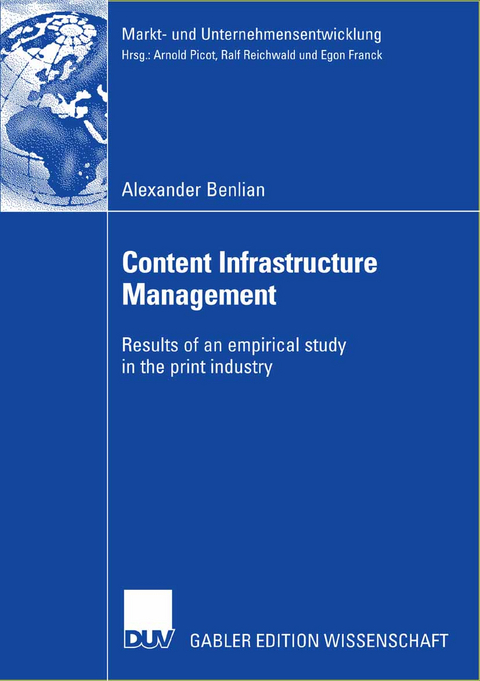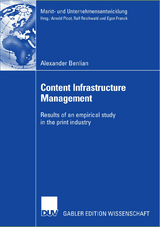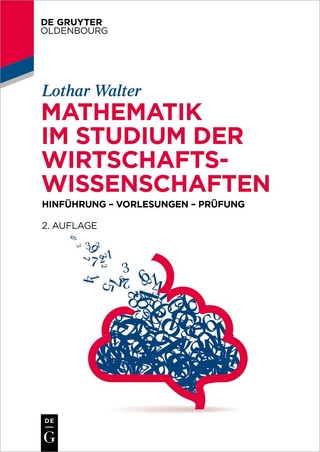Content Infrastructure Management
Results of an empirical study in the print industry
Seiten
2006
|
2006
Deutscher Universitätsverlag
978-3-8350-0368-2 (ISBN)
Deutscher Universitätsverlag
978-3-8350-0368-2 (ISBN)
Because of the increasing digitization and modularity of content media companies are challenged to exploit the gained degrees of freedom in the management of their most valuable asset. Opportunities abound - reutilizing, bundling and pushing content through diverse media channels leading to higher returns on investment. Although many studies have tackled the problem of properly allocating data, processing power or IT-related decision rights in the past, the topic of media content allocation has been neglected so far.
Taking into account strategic, organizational and technological factors Alexander Benlian explores the question of whether to centralize or to decentralize media content. The findings basically emphasize the need to design publishing organizations that follow certain patterns of congruency and consistency in order to realize greater effectiveness. These observed patterns or invariabilities may provide infrastructure managers with a benchmark against which to reassess the design of their own content allocation configuration. Aligned content infrastructures can be considered to dramatically increase the smoothness of content flows and to enhance production and bundling capabilities.
Taking into account strategic, organizational and technological factors Alexander Benlian explores the question of whether to centralize or to decentralize media content. The findings basically emphasize the need to design publishing organizations that follow certain patterns of congruency and consistency in order to realize greater effectiveness. These observed patterns or invariabilities may provide infrastructure managers with a benchmark against which to reassess the design of their own content allocation configuration. Aligned content infrastructures can be considered to dramatically increase the smoothness of content flows and to enhance production and bundling capabilities.
Dr. Alexander Benlian ist wissenschaftlicher Mitarbeiter von Prof. Dr. Thomas Hess am Institut für Wirtschaftsinformatik und Neue Medien der Universität München
Conceptual foundations
Causal model specification
Empirical test of the content allocation model
Discussion of model findings
| Erscheint lt. Verlag | 30.5.2006 |
|---|---|
| Reihe/Serie | Markt- und Unternehmensentwicklung Markets and Organisations |
| Vorwort | Prof. Dr. Dres. h.c. Arnold Picot, Prof. Dr. Thomas Hess |
| Zusatzinfo | XXI, 246 p. |
| Verlagsort | Wiesbaden |
| Sprache | englisch |
| Maße | 148 x 210 mm |
| Gewicht | 340 g |
| Themenwelt | Mathematik / Informatik ► Informatik |
| Mathematik / Informatik ► Mathematik ► Finanz- / Wirtschaftsmathematik | |
| Sozialwissenschaften ► Kommunikation / Medien ► Journalistik | |
| Wirtschaft ► Betriebswirtschaft / Management ► Marketing / Vertrieb | |
| Schlagworte | Content Management • Integrationsamanagement • IT-Architektur • IT-Infrastrukturentscheidung • organization • Print-Verlag • Publishing • Verlag / Verlagsbuchhandel |
| ISBN-10 | 3-8350-0368-2 / 3835003682 |
| ISBN-13 | 978-3-8350-0368-2 / 9783835003682 |
| Zustand | Neuware |
| Haben Sie eine Frage zum Produkt? |
Mehr entdecken
aus dem Bereich
aus dem Bereich
eine anwendungsorientierte Einführung
Buch | Softcover (2023)
Springer Gabler (Verlag)
49,99 €
Buch | Softcover (2023)
De Gruyter Oldenbourg (Verlag)
29,95 €




